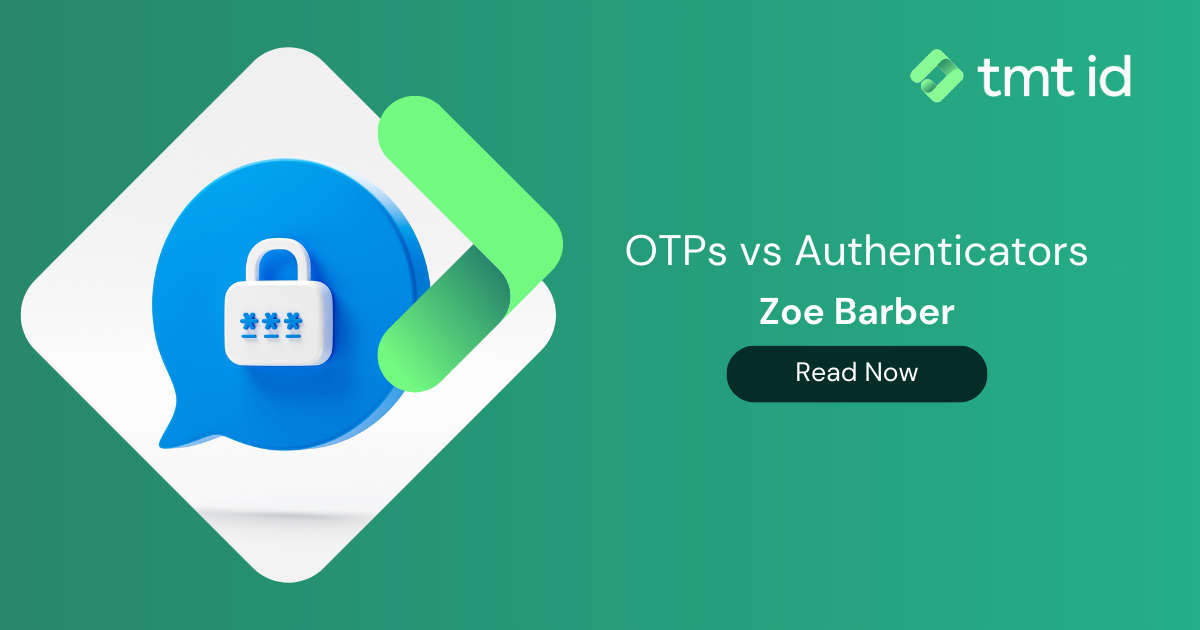
Over the last five years, a myriad of identity verification solutions have taken the stage, with OTPs and authenticators being the two most notable. But what are they? With fraud accounting for nearly 40% of all crime in England and Wales, businesses are finding themselves exploring modern solutions in attempts to reduce financial and reputational damage. For smaller enterprises, securing the registration and account usage processes is focal. However, larger enterprises that host high-value transactions face greater security requirements. Businesses of every size have turned to OTPs and Authenticators to protect their customers.
“A one-time password (OTP), also known as a one-time PIN, one-time authorization code (OTAC) or dynamic password, is a password that is valid for only one login session or transaction, on a computer system or other digital device.”
Definition of OTP from Wikipedia
“An authenticator app is usually installed on a smartphone and generates a 6-8 digit code every 30 seconds. The code can be used for signing in, trading, depositing, or withdrawing funds from an account.”
Definition of Authenticator from Kraken
An OTP is most commonly an SMS message sent to the mobile number given during the signup process, which when submitted to a web form will give the user access. Authenticator apps and SMS OTPs are both forms of 2FA (Two Factor Authentication) – along with email codes and phone calls – both of which decrease the likelihood of fraud and signal that you take fraud seriously, but how do you know which one is right for your business?
Both have advantages: authenticators provide a higher level of security but a less comfortable customer experience, OTPs are more convenient for the customer and business in general, but less secure due to SIM-Swap fraud. This conundrum – ‘security vs convenience’ – is a common one, luckily there are supplements to both forms of 2FA that can remove large pitfalls, allowing businesses to provide an elevated level of security without sacrificing customer experience.
When you use a mobile as your 2FA you turn your phone number into a digital identity device. To do this you must assume that the customer has access to the phone number, which is not always the case. However, when used in tandem with MNO (Mobile Network Operator) data, mobile numbers become a resourceful proxy for digital identity. This is because MNO data can inform you of various data points indicative of genuine identity.
The benefits of MNO data are substantial, for example, MNOs can provide information on whether the SIM has been swapped and when; if the number has been recycled; if the device has been changed; if it has been reported lost or stolen; and if the device in use is the one attached to the number submitted. When you have this information in aggregate – along with an OTP – confidence in an individual’s legitimacy is exceedingly high. MFA (Multi-Factor Authentication) is the new 2FA – layering less obstructive methods of authentication can create a robust, customer-friendly security system.
Companies like TMT provide GDPR-compliant access to MNO data to help your business stay ahead of the curve on digital identity and fraud prevention. TMT is helping insurers, banks, software developers and service providers to positively identify new customers, authenticate users and protect all manner of transactions from identity fraud and attacks. TMT works behind the scenes, using real-time data from mobile networks and devices to enhance your existing systems so you can focus on building ever better, more profitable customer experiences.
Last updated on March 28, 2024



We provide comprehensive device, network and mobile numbering data available.
Contact us > Chat to an expert >